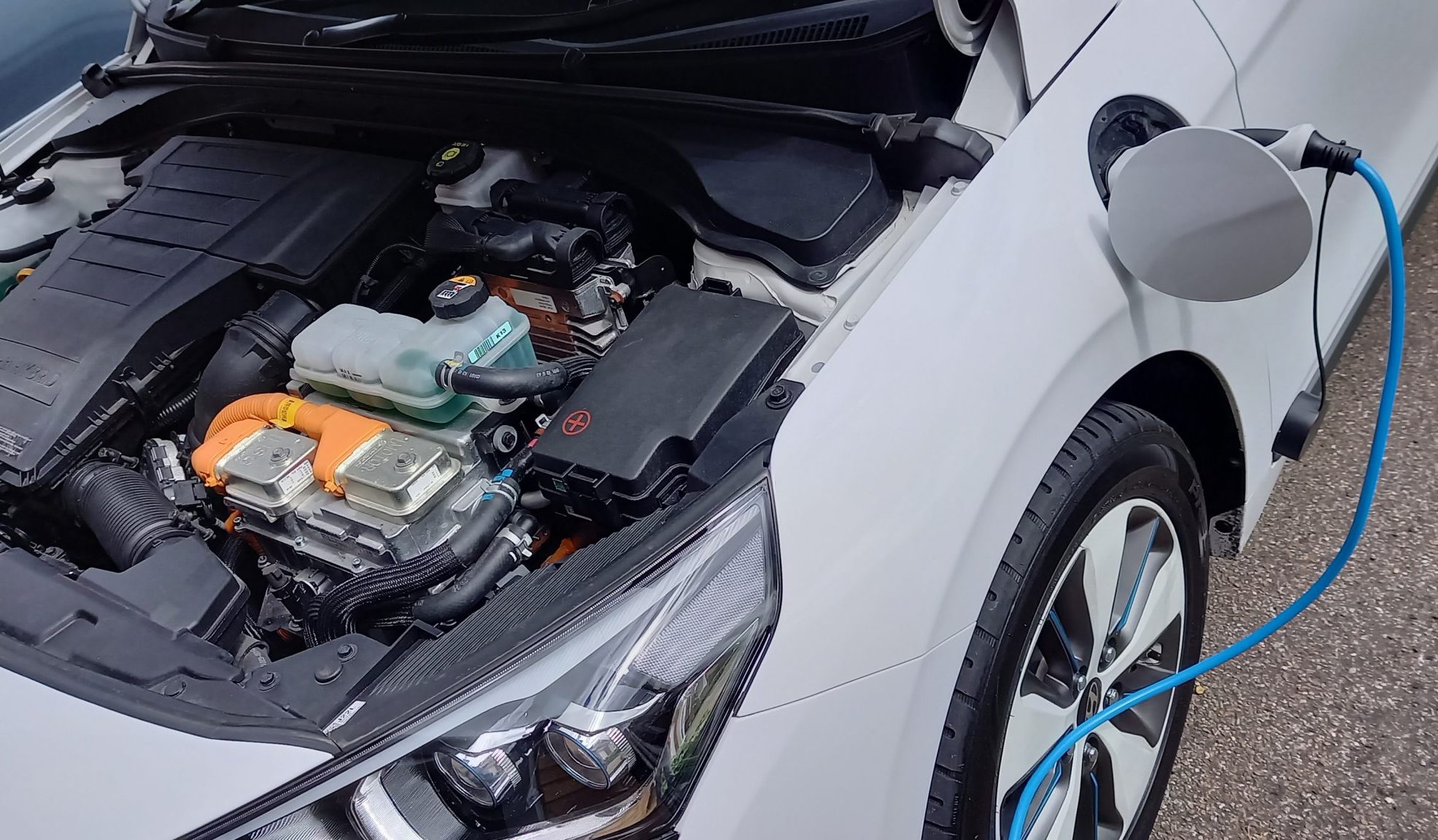My old Lambretta TV200 had been sat disused in the garden shed for nine years. Then in the summer of 2009, I was contacted by fellow scooterist Alan Sparham to ask me if I would like to have the scooter restored.
At that time, Alan was senior lecturer in the Motor Vehicle Paint and Body department at Northampton college.
Alan explained he would be running a classic motorcycle restoration course at the college beginning in September and needed donor scooters for the students to work on.
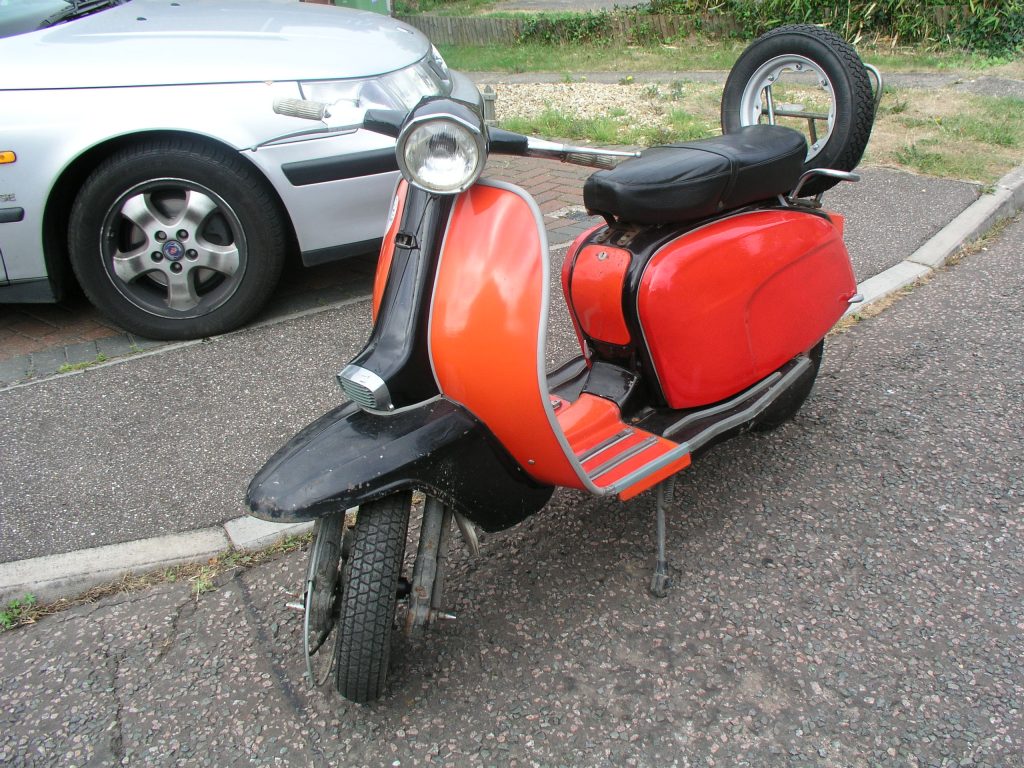
He also mentioned that the only costs to me would be for parts and paint. This was a big incentive and I agreed.

So Alan and several student helpers came over one weekend to collect the scooter in a van.
My Lambretta GT200 along with the other scooters was thus delivered to the college. Restoration work began at the start of the college’s 2009 autumn term.
Under Alan’s supervision, students dismantled the scooter right down to the basic frame and last nut and bolt.
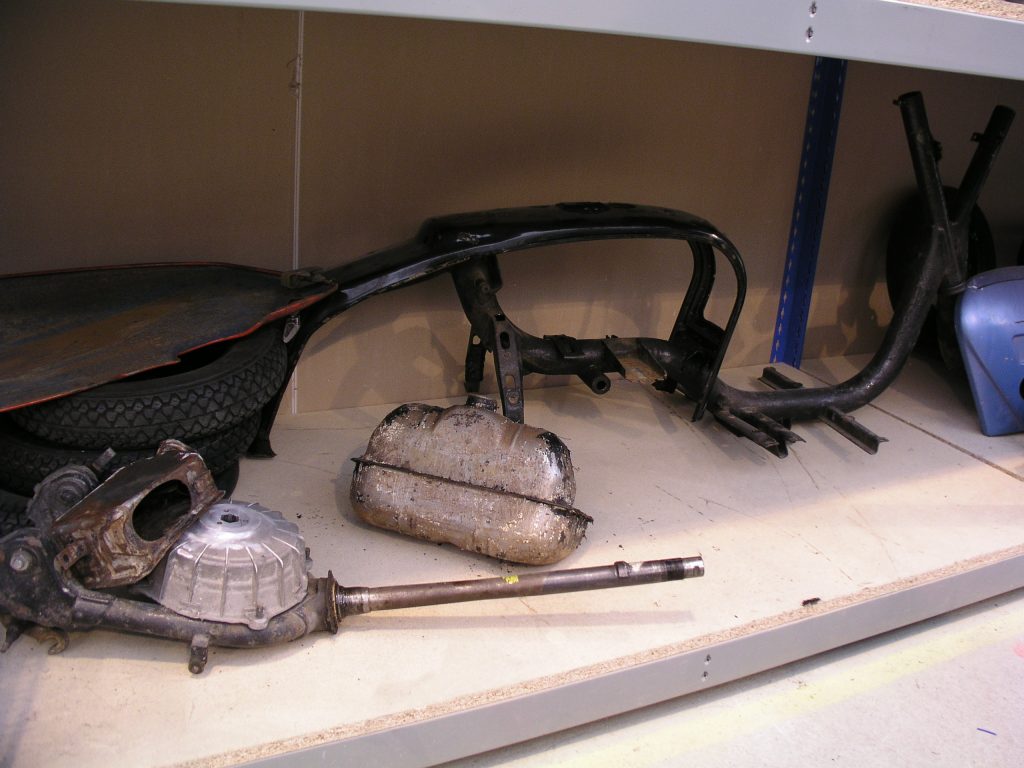

All parts were labelled and stored on designated racking in the college workshop.


The GT’s old paint was removed down to bare metal, rust patches were treated and some frame refurbishments carried out. These included a new strutt being welded on to the frame for the scooter’s centre stand and straightening out of a kink in the body shell.
I next heard from Alan around March 2010 when he telephoned to invite me over to the college and view progress with the scooter’s restoration. There were also some electrical issues that needed attending to and would I go in and lend a hand. So I went over to the college workshop to have a look.
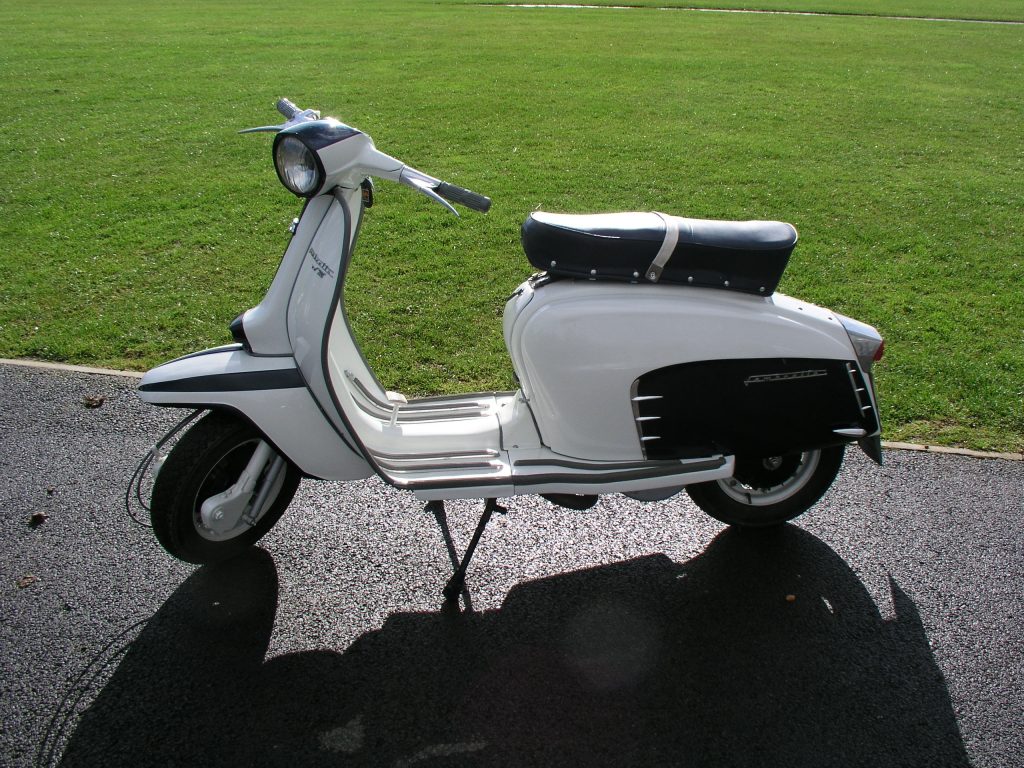


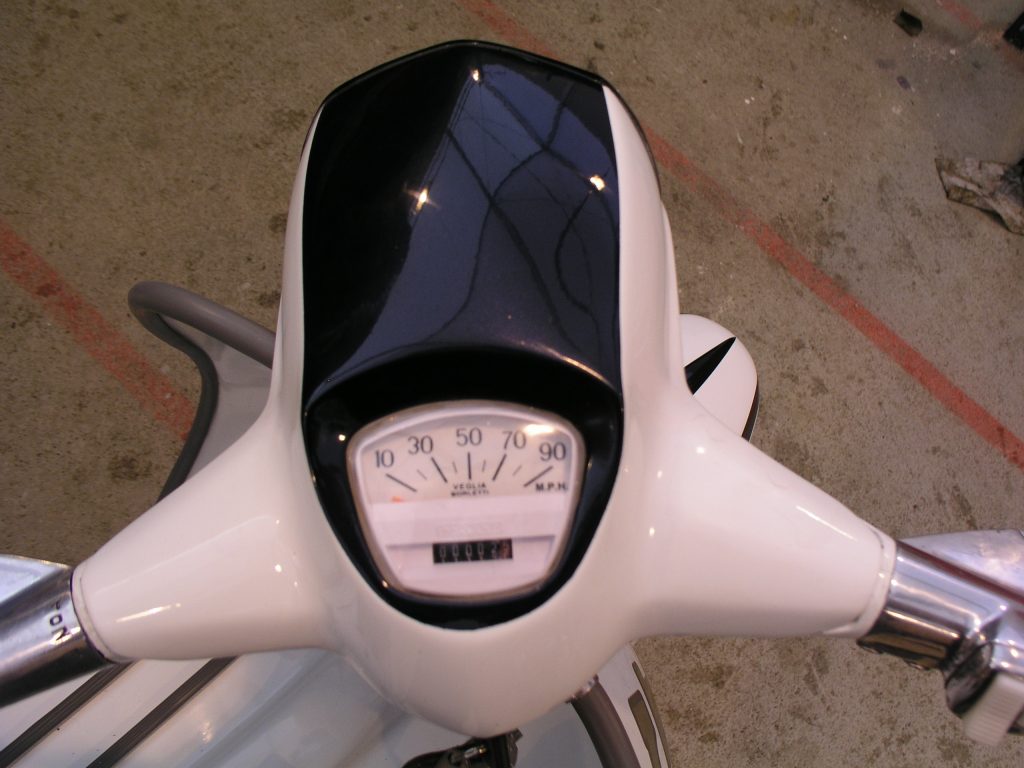
The GT’s new white and blue paint scheme is typical of the style applied by many Lambretta dealers in the 1960s. The reupholstered original style blue seat cover with white centre strap contrasts nicely with the paint scheme.
New polished aluminium badges and flashings – all previously missing – had been fitted to the appropriate body panels. The large letter G and T transfer stickers attached to the front of the legshields are also typical additions of the period.
Other new parts included a complete set of grey control cables, original style tool box lock, matching grey handlebar grips and rear brake pedal rubber.
Finally, the college entered all of the restored scooters in the Coventry Scooter show in April 2010, though none of them won any prizes.
A full professional restoration on a classic scooter these days can run into many thousands of pounds. The total cost to me for this restoration was around £450. To this day, I remain very pleased with the paint and body restoration work that was done to my old classic Lambretta TV200 scooter.

A number of mechanical and electrical issues remained to be resolved before I could take the GT out on the road again, several of them significant from a road worthiness standpoint. Nevertheless, it was still a good outcome to finally have the scooter restored, and to a very high standard.
But I also wanted to keep it that way and decided then to never put it on the road again (much to the derision of some of my friends). So my Lambretta GT200 scooter went back into storage in the garage, and there it stayed…
Until 2021
To be continued…
Classic Lambretta Part 3: Recommissioning. Read more…

Contact: Tony Kitchen (AK Automotive)
Telephone: 00 44 (0)7484 831 015
E-mail:tony@akautomotivetraining.co.uk
© AK Automotive 2023
Page last updated: Friday 12th May 2023
